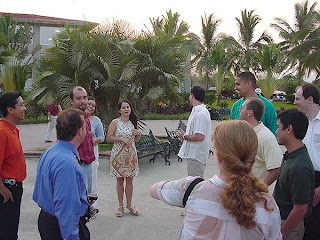One group of people that are usually blamed for not paying taxes and getting out of buying into the system are illegal Mexican immigrants. However, according to several articles around the nation, that trend seems to be changing as illegal immigrants head into different tax prep chains to have their taxes prepared. The IRS, it seems, doesn't check on a person's immigration status when processing their income tax forms.
Illegal immigrants are using their taxes to build a foundation in the American system, so that when they do apply for citizenship, they have a background to pull on to bolster their case.
The IRS issues Individual Taxpayer Identification Numbers, or ITINs, to migrants to use on their tax forms instead of Social Security numbers.
In 2006, the IRS issued 1.5 million ITINs--30 percent more than the 1.2 million issued in 2005.
The high number of people with ITINs seems like a good indication that there are illegal immigrants out there who are serious about being a part of the American system rather than just working here to send money back home and using the government's free programs.
However, thanks to wild generalizations from different political groups and media sources, illegal immigrants are painted as people looking just to mooch off of the American people. They are portrayed as the enemy when some are trying to become allies.
I wish that the tax story had been publicized more because it shows that not all illegal immigrants are moochers and some are making the effort to be a part of the system. I think that if the American people were more educated about little issues like this, there would be more true discussion about illegal immigration, rather than just national leaders screaming at each other across the border, legislators screaming at each other across the aisle, and the American people screaming at each other across the dinner table.
. . . . . . . . . .
More information about immigrants filing their taxes can be read in the Washington Post http://www.washingtonpost.com/wp-dyn/content/article/2007/04/08/AR2007040800117.html
Also, check out http:/












